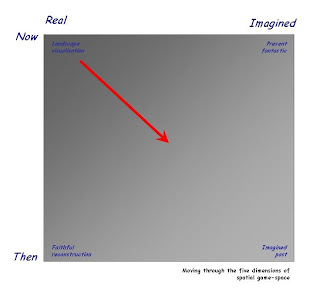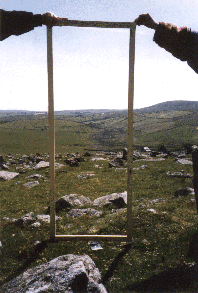I've been continuing to explore Pixel Active's excellent CityScape, particularly as its focus on urban modelling takes me into new realms of visualisation. The ability to import OpenStreetMap mapping and SketchUp models makes rapid visualisation of many cities easy. Below, is a quick (really quick, about 10 minutes work) model of a corner of my old home, York. Interesting, if a little quirky and certainly in need of more work.
On adding the River Ouse to my rough landscape, it struck me that CityScape's global water level functions would allow me to flood the landscape. Memories of York's dramatic winter 2000/2002 floods prompted the following crude visualisations of somewhat more water around Clifford's Tower than I remember.
Although this crude visualisation lacks an underlying terrain model, and so any pretence of credibility, it strikes me that this function might be adapted to look at one impact of future climate change in river valleys; flooding. Climate change and cultural heritage has concerned me and other colleagues elsewhere and with other hats on, but perhaps visualisation might bring home the potential real impact of climate change on cultural heritage more than words alone.



































